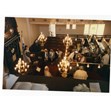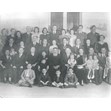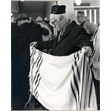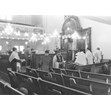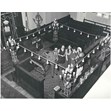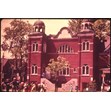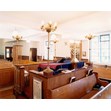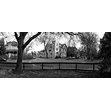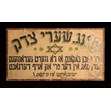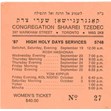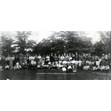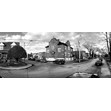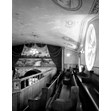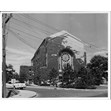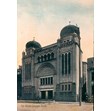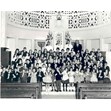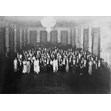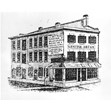- Accession Number
- 2013-12-9
- Source
- Archival Accessions
- Accession Number
- 2013-12-9
- Material Format
- textual record
- Physical Description
- 1 cm of textual records
- Date
- 2009-2012
- Scope and Content
- Accession consists of records documenting UJA Federation's Maot Chittin program in Cuba and a campaign event featuring Shimon Peres.
- Use Conditions
- UJA Federation meeting minutes and general correspondence are closed for 10 years from date of creation. Contracts and donor agreements are permanently closed.
- Subjects
- Presidents--Israel
- Prime ministers--Israel
- Name Access
- Peres, Shimon, 1923-2016
- Source
- Archival Accessions
- Accession Number
- 2014-10-3
- Source
- Archival Accessions
- Accession Number
- 2014-10-3
- Material Format
- textual record
- graphic material
- Physical Description
- 40 cm textual records
- ca. 50 photographs
- Date
- 1940-2012
- Scope and Content
- Accession consists of records of Canadian Young Judaea. Records include correspondence, camp committee meeting minutes, camp committee and staff lists, the CYJ constitution, organizational newsletters, donation lists, flyers and camp reunion ephemera. Records also include clippings and reproductions from the Zionist Archives, and Camp Solelim photographs, as well as publications from other Jewish organizations.
- Administrative History
- Canadian Young Judaea was founded in 1909 as a Zionist movement for Canadian youth by members of the Herzl Zion Club. As a Zionist organization, Young Judaea continues to be committed to fostering a sense of Jewish identity and values in today's Jewish youth and to encouraging a lifelong commitment to Israel. In order to foster a closer connection to Israel, Canadian Young Judaea employs educational Shlichim from Israel who are posted to various Jewish communities throughout Canada and to offices at the national level in Toronto Young Judaea also operates several Zionist summer camps located in each region of Canada, and a summer leadership institute called Camp Biluim in Quebec. In addition to the social programme of the organization, Young Judaea also offers educational seminars and conferences.
- Use Conditions
- Partially closed. Researchers must receive permission from the OJA Director prior to accessing some of the records.
- Descriptive Notes
- Access restriction note: Files contain personal information of donors, campers, committee members and applicants for subsidies.
- Subjects
- Camps
- Youth
- Zionism
- Name Access
- Canadian Young Judaea
- Source
- Archival Accessions
- Accession Number
- 2015-8-7
- Source
- Archival Accessions
- Accession Number
- 2015-8-7
- Material Format
- multiple media
- Physical Description
- ca. 70 cm of textual records and other material
- Date
- 1928-2013
- Scope and Content
- Accession consists of material documenting the activities of Ben Zion Shapiro and his family. The bulk of the records document the Shapiro family's involvement in Young Judaea. The Young Judaea material includes: yearbooks, photographs, correspondence, meeting minutes, event programmes, song books, newsletters, and two Camp Biluim flags made by Bunny Shapiro. One flag contains Camp Biluim's crest (1951) and the other one was created for Camp Biluim's colour war and contains the text "We will try and we will succeed Camp Biluim" (1954?). Also included is a VHS tape containing a copy of the Toronto Zionist Council's video about Camp Shalom (1991?). Of note are minute books maintained by Roy Shapiro for the Toronto Young Judaea Administrative Board (1928-1934) and for the Leadership Club (1940-1948).
- Accession also contains material relating to Roy and Ben Zion's involvement with the following organizations: the Coordinated Services to the Jewish Elderly (Circle of Care), B'nai Israel Beth David Congregation, Beth Tzedec's Mispacha Program, Beth Tzedec's Israel Action Program, Congregation Beth Haminyan, and Holy Blossom Temple's Department for Jewish Living. These records include, minutes, correspondence, newsletters and publications, evaluation reports and other reports. Also included is a demographic report entitied "Rapid Growth and Transformation: Demographic Challenges Facing the Jewish Community of Greater Toronto" (1995), material from a conference at the University of Toronto on the university's partnership with Israel, CHAT alumni directories, and a CHAT book entitled, "Voices: Jewish Teens of the 90's". Of note are buttons, photographs, reports and correspondence documenting Bunny and Ben Zion's trip to the Soviet Union on behalf of the CJC's Committee for Soviet Jewry.
- Finally accession includes material documenting family activities of the Shapiro and Sherman family. Included is a transcript of Bessie Sherman telling her life story (1978), haggadot, PowerPoint presentations created by Ben Zion for his grandchildren and for a family reunion outlining the family history of his family and Bunny's family. There is also a video of Ben Zion presenting his PowerPoint at the Michalski / Cohen family reunion. Also included are family films and videos containing footage of Bunny and Ben Zion's wedding and honeymoon, Camp Biluim, Young Judaea events, Bunny on Machon, family wedding anniversaries and birthday parties, trips to Israel, the United States, and Europe as well as footage of the Cousin's Club. Also included is a VHS tape containing a recorded segment from CityPulse News featuring the family's Pesach festivities in 1995.
- Photo identification: Back row, left to right: Ray Markus, Michelle Landsberg, Menachem ?, Frank Narrol. Front row, left to right: Gilda Mitchell, Bunny Shapiro, BenZion Shapiro, Malka Rabinowitz.
- Administrative History
- Ben Zion Shapiro was born in Toronto in 1931 to Roy Shapiro and Beck Shapiro (née Cohen). He has a younger brother, Morden "Mort" Shapiro (b. 1940). His father worked as an office manager at Rotstein Furniture and Maple Leaf Cleaners, and his mother worked as a legal secretary until marriage. Roy was active in a number of organizations including: Young Judaea, Sons of Jacob Society, Toronto Camera Club, a founding member of Beth David Synagogue, Coordinated Services to the Jewish Elderly (Circle of Care) and president of the Association of Jewish Seniors. Beck was active in Young Judaea and Pioneer Women (president of the Golda Meir Club).
- Ben Zion received a master of social work degree from the University of Toronto and attended the Jewish Agency Institute for Youth Leaders from Abroad in Jerusalem (1951-1952). He has worked for a number of organizations throughout his career, including: Young Judaea (he was director of both Camp Shalom [1962-1969] and Camp Biluim [1954-1956]), B'nai Brith Youth Organization, University Settlement, St. Christopher's House and director of the Novomeysky Centre in Jerusalem (1957-1961). He was also professor and associate dean of social work at the University of Toronto and three times visiting professor at the Hebrew University in Jerusalem.
- Ben married Bunny "Bernice" Shaprio in 1955. Bunny was born in 1934 in Noranda, Quebec to Irving Sherman and Bessie (née Consky). Bunny attended public school in Noranda, Noranda High School and Forest Hill Collegiate in Toronto, University of Toronto (BA), the Ontario Institute for Studies in Education (M.Ed. in special education), and the Jewish Agency Institute for Jewish Leaders from Abroad (1952-1953).
- Bunny graduated from the first Camp Biluim Institute for leadership training in 1951 and worked with Ben Zion at Camp Shalom as Camp Mother in 1962 and from 1964-1969. She also worked at Camp Biluim from 1955-1956. In 1983, Bunny and Ben Zion went to the Soviet Union to visit refuseniks on behalf of the Soviet Jewry Committee of the Canadian Jewish Congress, Ontario Region.
- Bunny and Ben have two children: Ayala and Ilan. Since Ben Zion's retirement in 1996, he and Bunny have been living in Jerusalem for half of each year. In 2015, they moved full-time to Jerusalem.
- Use Conditions
- Copyright is held by the Ontario Jewish Archives. Please contact the Archives to obtain permission prior to use.
- Descriptive Notes
- Physical description note: includes ca. 300 photographs (256 tiff), 2 PowerPoint presentations, 1 textual record (doc), 4 buttons, 2 flags, 5 VHS tapes, and 18 film reels (8 mm).
- Subjects
- Camps
- Youth
- Zionism
- Name Access
- Shapiro, Ben Zion, 1931-
- Source
- Archival Accessions
- Accession Number
- 2016-4-20
- Source
- Archival Accessions
- Accession Number
- 2016-4-20
- Material Format
- graphic material
- textual record
- Physical Description
- ca. 4 cm of textual records
- 7 photographs : col. ; 10 x 15 cm or smaller
- Date
- 1953-2014, predominant 1965-1995
- Scope and Content
- Accession consists of textual and graphic records documenting the history and professional activities of Ismé Bennie. The accession includes: a report card from Vereeniging Medium English High School; a SA identification card; documentation from her early employment history in SA; clippings of her work with News/Check magazine; newspaper articles documenting reactions to the "South Africa Speaks" documentary and her involvement with the production; correspondence received while working in public broadcasting at NET (National Educational Television, later succeeded by PBS [Public Broadcasting Service]) and OECA (Ontario Educational Communications Authority, also known as TVOntario); an invitation to the Canadian Film and Television Production Association (CFTPA) Personal Achievement Award party in 1990 and correspondence related to her receipt of the award; a commemmorative document written by Stuart Foxman entitled "Paragon International: Bennie Celebrates Decade at the Helm"; correspondence regarding Bennie's ten year anniversary at Paragon; an invitation to the CFTPA Jack Chisholm Award for Lifetime Contribution to the Motion Picture and Television Industry luncheon and correspondence related to her receipt of the award.
- Identified in the photos are: Ismé Bennie and Veronica Tennant.
- Custodial History
- Material was in possession of Ismé Bennie. Isme donated it to the OJA.
- Administrative History
- Ismé Bennie was born in Vereeniging, South Africa in 1940. She graduated from Witwatersrand University in 1960 with a B.A. in Library Science. She intially worked as a librarian at the City of Johannesburg Library and briefly left SA to seek opportunity in London. After returning from London, Ismé worked as a writer, researcher and editor with News/Check magazine until the mid-1960s. During this period, she participated in the production of "South Africa Speaks"; a Peabody Award-winning NET/WGBH produced documentary that was critical of the apartheid regime.
- Bennie left SA in 1965 in search of professional opportunity and to leave the politics of apartheid. She began working primarily in public broadcasting in the United States. She continued in this field after relocating to Canada 1960s and rose to success in production at OECA,
- In 1983, she founded Ismé Bennie International, a media distribution company. After it merged with production company Paragon, Bennie returned to broadcasting. She joined CHUM, (the Toronto-based media company), as Director of Development, rising to Director of Programming and Acquisitions in 1995, and that year won the (CFTPA) Jack Chisholm Award. Previously, she had received the CFTPA Personal Achievement Award in 1990. In 2003, Women in Film and Television – Toronto (WIFT–T) recognized her contribution to supporting and developing women in broadcasting, and she received the WIFT-T Outstanding Achievement Award. Canadian Television Network (CTV) acquired CHUM in 2007 and Bennie was one of the executives retained in the acquisition. Around 2010, Bennie left CTV. Since leaving she has done consulting work and freelance writing. In 2015, she published a memoir entitled, White Schooldays : Coming of Age in Apartheid South Africa.
- Use Conditions
- Copyright is held by the Ontario Jewish Archives. Please contact the Archives to obtain permission prior to use.
- Descriptive Notes
- Related material note: oral history AC 429
- Subjects
- Authors
- South Africa--Emigration and immigration
- Television producers and directors
- Name Access
- Bennie, Ismé
- Source
- Archival Accessions
- Accession Number
- 2016-12-63
- Source
- Archival Accessions
- Accession Number
- 2016-12-63
- Material Format
- graphic material (electronic)
- textual record
- Physical Description
- 19 photographs : col. (jpgs) ; 72 MB
- 1 folder of textual records
- Date
- [2014?]-2016
- Scope and Content
- Accession consists of 19 digital photos of Shoresh activities including beekeeping, farming, the Kavanah Garden in Vaughan, Maxie's Garden in Kensington Market, a map of Bela Farm in Hillsburgh, and gardening at Baycrest. Also included is a copy of Shoresh 2016 Year in Review.
- Administrative History
- Shoresh is a grassroots Jewish environmental organization in Southern Ontario. They exist to nurture a regional Jewish community that sees environmental ethics as a core element of Jewish identity, and is actively committed to responsible stewardship of the earth. They do this through educational programs that link Jewish texts and teachings with experiences of awe and wonder of the natural world; leadership opportunities that invest in the next generation of Jewish environmental leaders; and responsive action including environmental advocacy and the production of sustainable products that enrich Jewish life. They operate out of Shoresh’s Kavanah Garden in Vaughan, Bela Farm in Hillsburgh, and through schools, synagogues, camps, and community organizations throughout the Greater Toronto Area.
- Descriptive Notes
- PHYSICAL DESCRIPTION NOTE: There is a PDF version of image #19 of Bela Farm
- Subjects
- Agriculture
- Food
- Name Access
- Shoresh (Toronto, Ont.)
- Source
- Archival Accessions
- Accession Number
- 2016-11-3
- Source
- Archival Accessions
- Accession Number
- 2016-11-3
- Material Format
- graphic material (electronic)
- Physical Description
- 1 photograph : col. (jpg) ; 10.3 MB
- Date
- 2013
- Scope and Content
- Accession consists of one digital photo of Ran Goel with produce. This is a publicity photo for Fresh City Farms.
- Administrative History
- Fresh City Farms is Canada’s largest commercial city farm located on six acres at Downsview Park in Toronto. Its mission is to create and perfect new ways to connect food makers and eaters. Founder Ran Goel lists “his grandmother’s stories about growing up on a Kibbutz, feeling democracy awaken in his childhood home of South Africa and his mom’s stuffed peppers” as inspiration.
- Subjects
- Agriculture
- Farms
- Food
- Name Access
- Fresh City Farms
- Source
- Archival Accessions
- Address
- 10 St Andrew Street
- Source
- Landmarks
- Address
- 10 St Andrew Street
- Time Period
- 1930
- History
- It was founded by poor Jewish immigrants from Russia (mostly Minsk) in 1912. The current Byzantine Revival building was completed in 1930. The congregation has had only three full-time rabbis: Meyer Levy (1916–1921), Meyer Zimmerman (1940–1954), and Shmuel Spero, who has served from 1988 to the present. It is the only Orthodox synagogue in downtown Toronto with a full-time rabbi, and the only one that holds daily services.
- Category
- Religious
- Source
- Landmarks
- Address
- 187 Brunswick Avenue
- Source
- Landmarks
During the early 1980s, newcomers to the synagogue introduced an alternative egalitarian service in the basement, which eventually became the main service in the sanctuary. The Synagogue underwent renovations in the early 1980s, and again more recently, in an effort to accommodate its new members and to provide for its future as a neighborhood synagogue. In recent years, the First Narayever has become one of the most well-attended and active synagogues in the downtown area.
- Address
- 187 Brunswick Avenue
- Time Period
- 1914-present
- Scope Note
- During the early 1980s, newcomers to the synagogue introduced an alternative egalitarian service in the basement, which eventually became the main service in the sanctuary. The Synagogue underwent renovations in the early 1980s, and again more recently, in an effort to accommodate its new members and to provide for its future as a neighborhood synagogue. In recent years, the First Narayever has become one of the most well-attended and active synagogues in the downtown area.
- Category
- Architecture
- Religious
- Source
- Landmarks
- Address
- 25 Bellevue Avenue
- Source
- Landmarks
The congregation of Rodfei Sholom Anshei Kiev, commonly known as the Kiever, dates back to 1912. The first few members had little means for funding a new synagogue in 1912, so services at this time were held in a rented house on Centre Avenue in the Ward.
- Address
- 25 Bellevue Avenue
- Time Period
- 1927-present
- Scope Note
- The congregation of Rodfei Sholom Anshei Kiev, commonly known as the Kiever, dates back to 1912. The first few members had little means for funding a new synagogue in 1912, so services at this time were held in a rented house on Centre Avenue in the Ward.
- History
- In 1917, the Kiever acquired a house at 25 Bellevue Avenue in Kensington Market and by 1923 the Kiever congregation raised enough funds to build a synagogue large enough to accommodate its growing numbers. The Kiever Executive contracted Benjamin Swartz, a Jewish architect, to design the current synagogue at 25 Bellevue, which replaced the two houses that had been used for services. The Synagogue was completed in 1927, after three years of construction. Today, the Kiever is a vibrant synagogue and one of a handful of synagogues remaining in the downtown area.
- Category
- Architecture
- Religious
- Source
- Landmarks
- Address
- 397 Markham Street
- Source
- Landmarks
The Shaarei Tzedek Congregation was founded by new Russian immigrants around 1901. The congregation’s first shul was situated originally on 29 Centre Avenue, south of Dundas on the east side of the street, in the vicinity of present-day Nathan Philips Square. Louis Gurofsky (1871-1934), a prominent member of the Jewish community and a business man, lived in a house at 397 Markham Street with his family. In 1937, following Gurofsky’s death in 1934, Shaarei Tzedek occupied the Markham Street house of the Gurofsky family and renovations were soon undertaken to convert the residence into a synagogue, designed by Benjamin Swartz.
- Address
- 397 Markham Street
- Time Period
- 1937-present
- Scope Note
- The Shaarei Tzedek Congregation was founded by new Russian immigrants around 1901. The congregation’s first shul was situated originally on 29 Centre Avenue, south of Dundas on the east side of the street, in the vicinity of present-day Nathan Philips Square. Louis Gurofsky (1871-1934), a prominent member of the Jewish community and a business man, lived in a house at 397 Markham Street with his family. In 1937, following Gurofsky’s death in 1934, Shaarei Tzedek occupied the Markham Street house of the Gurofsky family and renovations were soon undertaken to convert the residence into a synagogue, designed by Benjamin Swartz.
- History
- Following the Second World War, a second wave of Russian immigrants, many of whom were Holocaust survivors, found spiritual refuge at the Markham Street shul, and membership again began to rise. In the 1950s the shul employed the services of Rabbi Israel Frankel, a prominent Jewish scholar and one of the founders of the Toronto Jewish Public Library. As the Jewish community increasingly moved to the northern and outlying suburbs of Toronto, this general trend began to take its toll on the membership of the Shaarei Tzedek into the 1960s. The congregation was obliged to declare bankruptcy in 1968. However, a concerted fund-raising effort by Jewish community leaders in the area re-established the congregation in 1970, under the spiritual and administrative leadership of the shul’s president, Dr. Joseph Greenberg.
- Category
- Architecture
- Religious
- Source
- Landmarks
- Address
- 56 Maria Street
- Source
- Landmarks
Congregation Knesseth Israel was built in 1911 at 56 Maria Street in the Junction. Its architect was James Ellis, who between 1890 and 1912 designed over fifty buildings in the area. Early 20th century membership consisted mainly of new Jewish immigrants from Eastern Europe, many of whom lived and worked in the Junction as artisans, peddlers, shop owners and scrap and metal collectors. It is the oldest Toronto synagogue still in use as a synagogue today. The synagogue was restored in the early 1990s and remains active today. It is cared for by the descendants of the founding families.
- Address
- 56 Maria Street
- Time Period
- 1911-present
- Scope Note
- Congregation Knesseth Israel was built in 1911 at 56 Maria Street in the Junction. Its architect was James Ellis, who between 1890 and 1912 designed over fifty buildings in the area. Early 20th century membership consisted mainly of new Jewish immigrants from Eastern Europe, many of whom lived and worked in the Junction as artisans, peddlers, shop owners and scrap and metal collectors. It is the oldest Toronto synagogue still in use as a synagogue today. The synagogue was restored in the early 1990s and remains active today. It is cared for by the descendants of the founding families.
- Category
- Religious
- Architecture
- Source
- Landmarks
- Address
- 1950 Bathurst St.
- Source
- Landmarks
Holy Blossom was the first Jewish congregation in Ontario, established in September 1856 as the Toronto Hebrew Congregation. Many of Toronto’s earliest Jewish families were members of this congregation and were also responsible for establishing the city’s first Jewish cemetery on Pape Avenue. For 20 years, the congregation rented space over a drug store on Yonge Street until 1876 when a Synagogue was built on Richmond Street West. As the congregation grew, it moved to a new building on Bond Street in 1897, designed in the Byzantine Revival style (this building is now St. George’s Greek Orthodox Church).
- Address
- 1950 Bathurst St.
- Time Period
- 1937-present
- Scope Note
- Holy Blossom was the first Jewish congregation in Ontario, established in September 1856 as the Toronto Hebrew Congregation. Many of Toronto’s earliest Jewish families were members of this congregation and were also responsible for establishing the city’s first Jewish cemetery on Pape Avenue. For 20 years, the congregation rented space over a drug store on Yonge Street until 1876 when a Synagogue was built on Richmond Street West. As the congregation grew, it moved to a new building on Bond Street in 1897, designed in the Byzantine Revival style (this building is now St. George’s Greek Orthodox Church).
- History
- While Holy Blossom was first established as an Orthodox congregation, in the late 1800s a move toward Reform practices began, including changes to services and the introduction of music and family seating. In 1920, Holy Blossom became a Reform Congregation affiliated with the Union of American Hebrew Congregations (now the Union for Reform Judaism), and has remained a leading Reform Synagogue in Canada ever since. By the 1930s, Holy Blossom had outgrown its Bond Street location and a fundraising campaign began to raise money to purchase property and build a new larger synagogue. In 1937, Holy Blossom moved to its present location on Bathurst south of Eglinton, designed in the the Romanesque Revival style by architects Chapman and Oxley with Maurice Dalvin Klein.
- Category
- Religious
- Architecture
- Source
- Landmarks









































































































































































































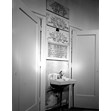
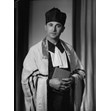
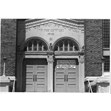
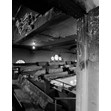
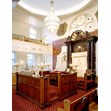
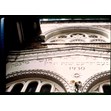
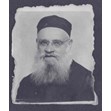
![Minsker Synagogue, interior sanctuary, Toronto, [ca. 1977]. Ontario Jewish Archives, Blankenstein Family Heritage Centre, item 2063|](/media/Digital Assets/2063.jpg?width=111&height=111&404=no-img.jpg)


![First Narayever Synagogue, interior, Toronto, [ca. 1977]. Ontario Jewish Archives, Blankenstein Family Heritage Centre, item 2075.|](/media/Digital Assets/2075.jpg?width=111&height=111&404=no-img.jpg)

![Procession at Kiever Synagogue, Toronto, [194-]. Ontario Jewish Archives, Blankenstein Family Heritage Centre, item 535.|The man on the second from the right is Isaac Belfer who was the Gabbai at the Kiever for many years.](/media/Digital Assets/535.jpg?width=111&height=111&404=no-img.jpg)


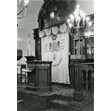
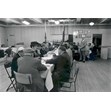
![Rabbi Solomon Langner in Kiever Synagogue, Toronto, [195-?]. Ontario Jewish Archives, Blankenstein Family Heritage Centre, item #533|When the Kiever was completed 1927, Rabbi Solomon Langner became the spiritual leader of the congregation and continued in this capacity until his death in 1973. Rabbi Langner was the son of Rabbi Moishe Langner, the Strettiner Rebbe of Toronto. His three brothers were Abraham, Isaac, and Mordechai, who all became rabbis as well.](/media/Digital Assets/533.jpg?width=111&height=111&404=no-img.jpg)
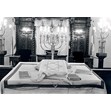
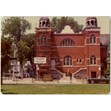
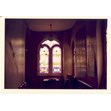
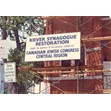
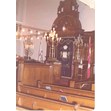
![Sol Edell (left), Chairman of TJC-CJC Archives Committee discusses restoration plans for the Kiever Synagogue with architect Martin Mendelow (right), [1975?]. Ontario Jewish Archives, Blankenstein Family Heritage Centre, item 1794.|](/media/Digital Assets/1794.jpg?width=111&height=111&404=no-img.jpg)
